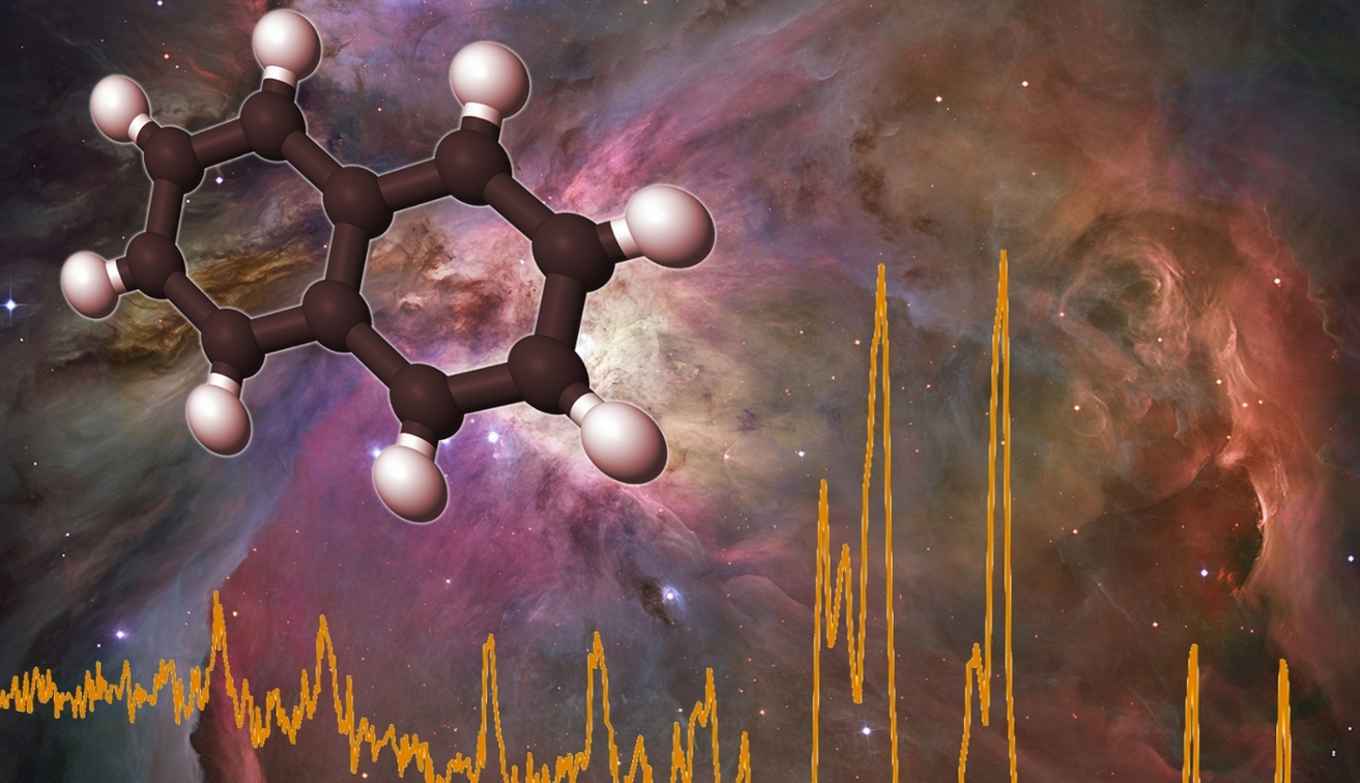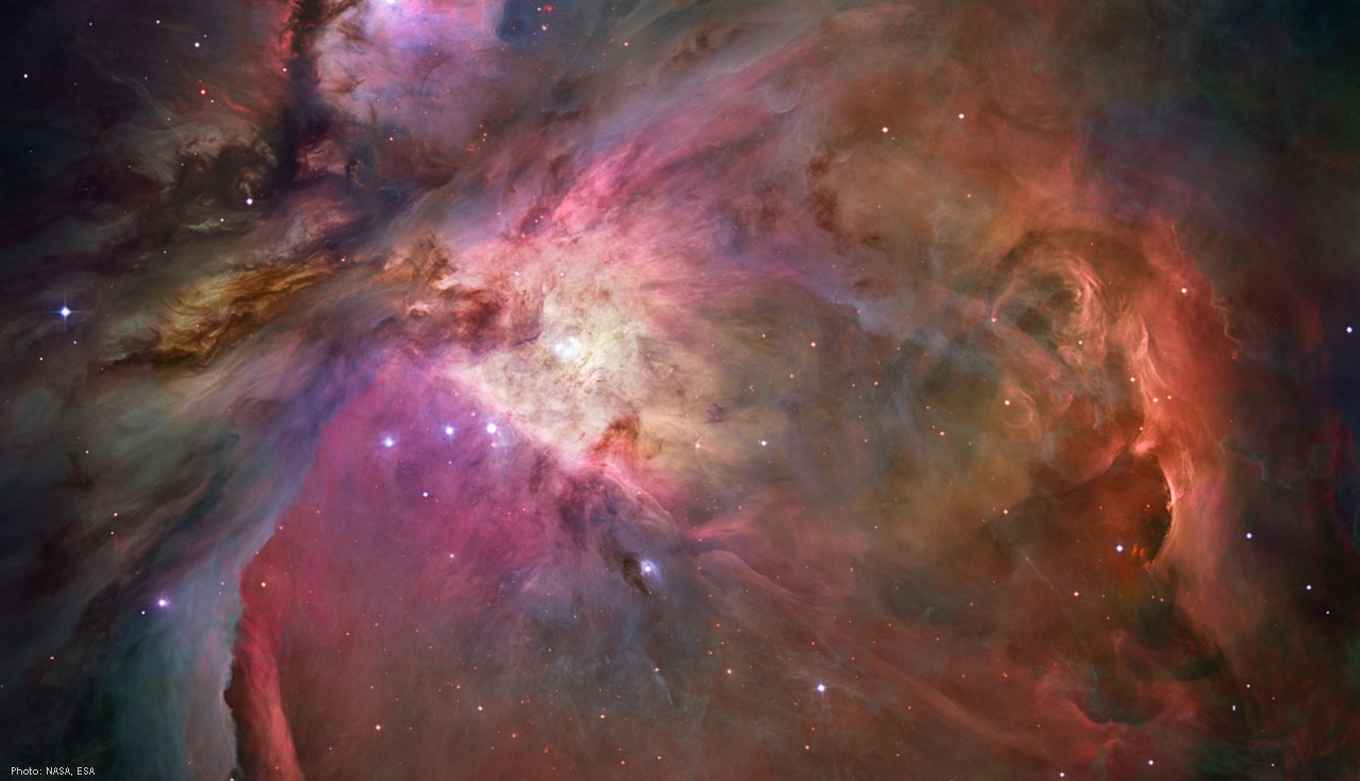Surprisingly complex fingerprint of PAH molecules in space
Spectroscopic and quantum-chemical studies boost astrochemical research
13 November 2015

PAHs constitute a group of numerous organic molecules that are notorious for being carcinogenic byproducts of, for example, combustion and grilled meat. However, PAHs are also found throughout the universe and are important for astronomers because they provide clues on how matter is formed in interstellar space and how it eventually evolves to form stars and planets.
The characteristic infrared radiation emitted by interstellar PAHs is a powerful means to identify these molecules. However, distinguishing the radiation emitted by PAHs from other radiation sources is far from trivial. Astronomical data are analysed by comparison with databases containing a large body of PAH infrared spectra (the fingerprints). These spectra are based on theoretical calculations and laboratory experiments.

Complex fingerprint
To date, astronomers have not been able to identify individual PAH molecules. The experiments of Elena Maltseva, graduate student in the Molecular Photonics group at the UvA’s Van 't Hoff Institute for Molecular Sciences, may now change this. Maltseva studied the molecule naphthalene, a relatively small PAH, using advanced laser spectroscopic methods under the same conditions as those present in interstellar environments. The results were astonishing.
‘According to the common models, I would have expected to find two, or maybe three, absorption bands in this range of the spectrum’, says Maltseva. ‘It was therefore quite shocking to see a spectrum appearing with at least 23 fairly strong bands.’ Subsequent experiments on a series of other PAHs gave analogous results: in each case, the fingerprint was far more complex than expected. Maltseva: ‘ This means that the models that are commonly used deviate strongly from the interstellar reality.’
Quantum-chemical calculations
To rationalise these observations, researchers at the Leiden Observatory developed in collaboration with colleagues at NASA's Ames Research Center a novel quantum-chemical approach to calculate and predict PAH spectra. Cameron Mackie, graduate student at the Leiden Observatory: ‘ We realised that the deviations from ideal vibrational motion were much larger than previously assumed. This leads to strong mixing of vibrational states, which has a tremendous effect on the appearance of the spectra. Bands that would normally be forbidden can then steal intensity from allowed bands. Implementing a proper description of these couplings allowed us to correctly reproduce the experimentally observed spectra.’
James Webb Space Telescope
The improved quantum-chemical methods will provide astrochemists with considerably better fingerprints for an extensive series of PAH molecules. This will allow for a much more detailed analysis of astronomical data. It is expected that this will lead to the detection of individual PAHs. The breakthrough achieved now is timely, since the James Webb Space Telescope will be launched in 2018. This instrument will be able to perform astronomical observations at unprecedented spectral and spatial resolution.
A scenario which is now coming within reach is one in which astronomical observations can be translated directly into specific PAH compositions. Dr. Annemieke Petrignani, experimental astrophysicist at the Leiden Observatory, is very enthusiastic about this possibility. Earlier this year she received a prestigious VIDI grant from NWO to determine the composition, sizes and shapes of interstellar PAHs, working in collaboration with researchers at the UvA and the Radboud University. Petrignani: ‘PAHs are “hot” – there is a tremendous need for characteristic spectral fingerprints of these molecules and to understand these fingerprints at the most fundamental level.’
The research was funded by the Dutch Organisation for Scientific Research (NWO) within the framework of the Dutch Astrochemistry Network (DAN), a collaborative endeavour between astronomers, chemists and physicists.
Publication data
Elena Maltseva, Annemieke Petrignani, Alessandra Candian, Cameron J. Mackie, Xinchuan Huang, Timothy J. Lee, Alexander G. G. M. Tielens, Jos Oomens & Wybren Jan Buma: ‘High-resolution IR absorption spectroscopy of polycyclic aromatic hydrocarbons: the realm of anharmonicity.’ The Astrophysical Journal 814, 23 (2015). DOI: 10.1088/0004-637X/814/1/23